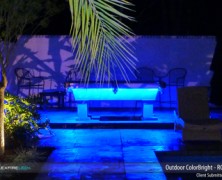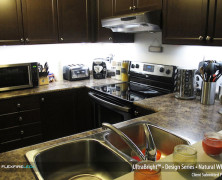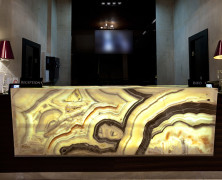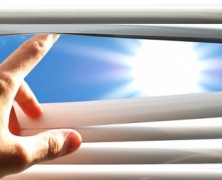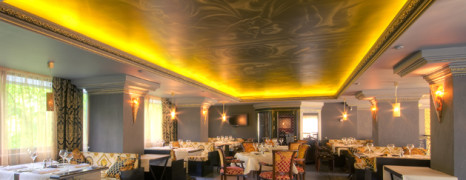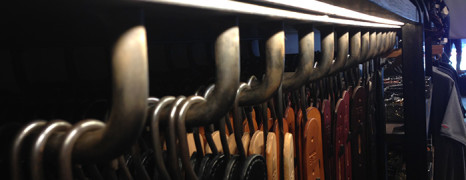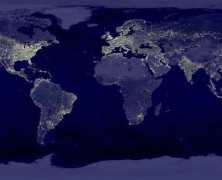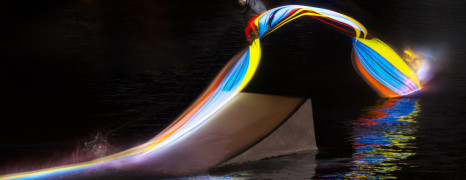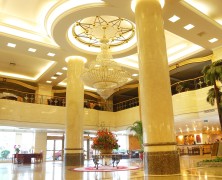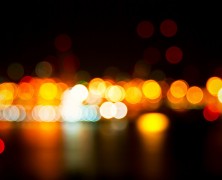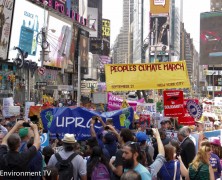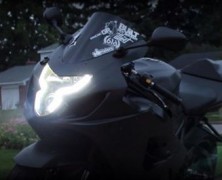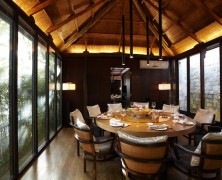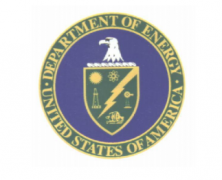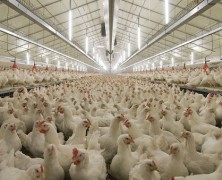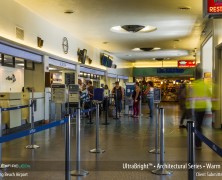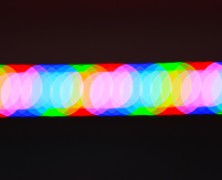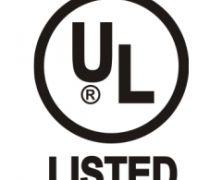When the Seattle Seahawks face off against the New England Partiots at this upcoming Super Bowl, LED stadium lighting will illuminate the field. Scheduled for Feb. 1st, the game will be the first NFL championship match that has ever been lit with LED lights. The LED lights were installed last fall at University of Phoenix Stadium. The Arizona Cardinals and San Francisco 49ers were the first to play a game on Sept. 21st, 2014 under the new lighting system. The LED stadium lighting will significantly increase the light on the field and will produce a more vivid picture on the screen for the 110 million plus expected viewers of this year’s game. The light will shine in a more uniform manner than the legacy system, creating less shadows and a clearer view of the action taking place on the field. Another advantage of LED lighting is the fact that they don’t flicker, which will lead to less distractions during slow-motion replays. There will be 312 LED fixtures installed to replace the 780 metal halide lights. The new LED stadium lighting will use just 380,000 watts compared to the 1.24 million watts needed to power the old system. Combined with savings generated for lower air-conditioning costs, most venues that choose LED stadium lighting enjoy a 75% reduction in overall energy consumption. Further, the system will age more gracefully than metal halide lights, which take on a reddish hue and lose brightness over the years. The University of Phoenix Stadium was originally opened in 2006. With its innovative design that includes a retractable roof and field, it’s recognized as one of the most advanced stadiums in North America in terms of its engineering. This multi-purpose facility previously hosted Super Bowl XLII in 2008. It also hosts the annual Fiesta Bowl, and numerous international soccer matches. The stadium seats 63,400 fans, but is expandable to seat 72,200. Questions? This Super Bowl Sunday will be lit by LEDs? Just another reason that Flexfire LEDs is excited about being a part of the future of LED lighting! If you have any questions about LEDs, and specifically LED strip lighting, remotes, and dimmers, please stop by our website at flexfireleds.com or give us a call at 1-844-FLEXFIRE (1-844-353-9347) to talk with one of our design specialists...
5 Different Ways To Use Color Changing Led Strip Lights...
posted by Taran Volckhausen
Flexfire LEDs ColorBright RGB Color-Changing Strips are popular for both home and commercial applications. In this post, we present you with five ideas for using color changing LED strip lights. Waterside Color Changing LED strip lighting Who doesn’t like spending time by the pool or the lake during warm summer nights? Color changing LED strips are great for this purpose because the changing colors will boost the mood of your gathering, be it among friends or family. Make sure that the lights are rated for outdoor use and that they are water resistant. Flexfire LEDs offers two choices for outdoor-rated color changing LED strips: ColorBright RGB 150 Outdoor strips and ColorBright RGB 300 Outdoor strips. The 300 RGB have double the amount of LED diodes per reel and produce twice as much light as the 150 RGBs. Living Room Color-Changing LED strip lighting Color changing LEDs in the living room are a great way to start a party, or set the mood on a date. Or to help you find your “happy place” after a stressful day at work. Did you know that light color has a significant effect on on our moods? That means putting color changing lights in the living room will give you greater control not only of your lighting environment, but also of your mental state. While many people come to us in their search for colorful lights, they would like a “white light” option as well. For these clients we suggest our ColorBright RGB plus Warm White strips. Using a remote, users switch between warm white setting and the RGB color-changing setting. The result of this amazing pairing is beautiful and allows for an unparalleled degree of personal customization. Stage Color-Changing LED strip lighting Most people write off strip lights for stage lighting purposes because...
Kitchen Lighting: 5 Ideas That Use LED Strip Lights...
posted by Taran Volckhausen
“There is too much light in this kitchen,” said no one ever. Many homeowners have found that adding more kitchen lighting dramatically improves their ability to prepare meals and enjoy time in the kitchen, a room that is often referred to as the heart of the household. Just as there are many ways to bake a cake, there are many ways to improve kitchen lighting with LEDs. In this post, we will walk you through a few popular options for improving kitchen lighting using LED strip lights. Under Cabinet Lighting Probably the most common application of LED strips in the kitchen is under cabinet lighting. With Flexfire LEDs strip lights, adding attractive task lighting is as easy as one-two-three. Start by peeling off the paper backing. Then attach the highly adherent adhesive to the bottom of your kitchen cabinets. Finally, plug them into a power source and voila, we’ve got light! It’s nearly that easy, but of course if you have questions about installing under cabinet lighting (such as what kind of power supply you will need or how to install a dimmer), our on-call design specialists would love to lend a helping hand. For this sort of installation, we generally suggest our UltraBright™ Architectural series, which comes in three different color temperatures of white — warm, natural and bright. Also, consider installing an LED dimmer for further user control. Above Cabinet LED Lighting Above cabinet lighting is an incredible solution for those who love the healthy, generous glow and sleek look of indirect lighting designs. Attach versatile, discreet LED strip lights to the top of any cabinet to provide a beautiful indirect light source without any visible wires or components. Adding high quality, indirect light will bring the kitchen to life; it’s a look favored by top kitchen lighting...
Granite, Marble, and Onyx Backlighting With LED Strip Lights...
posted by Taran Volckhausen
Translucent backlighting is a powerful tool for designers who want to create artistic, tasteful indoor environments. High quality bright lighting is key to achieving this look, and Flexfire LEDs strip lights definitely fit the bill. Using our strips to backlight onyx, granite, or marble panels maximizes the visual impact of these attractive materials in decorative wall panels, countertops, reception desks, floors and more. To create granite, marble, or onyx backlighting, we suggest using LED strip lights that are evenly spaced behind the material to create an even, bright glow. Our strip lights are the brightest available on the market today, which is a good thing if you want people to notice your installation. While many people use a professional contractor to perform this installation, it can certainly be done as a do-it-yourself project. Let’s look at some of the key factors to consider if you want this look in your home or business. First, LED strip lights run cooler than CFLs, and will be much safer to operate. Adding an aluminum heat sink will help the strips run even more efficiently, adding energy and cost savings to the list of benefits. LED strip lights are also smaller than CFLs, allowing more freedom to realize your design vision. Finally, LED strips can be cut, curved, and connected to fit any dimensions you have with little or no difficulty. When backlighting translucent materials, the idea is to make it appear as though the sun is shining through them. Many will claim that you need to buy expensive, custom-made LED modules to achieve this look. You are certainly free to do so, but our affordable strip lights will work perfectly as they can diffuse the light and create an even glow. Reliability is of course another important...
Integrated Daylight Harvesting With LEDs...
posted by Taran Volckhausen
It seems every day the LED industry is crossing new boundaries, reaching new thresholds, and brightening an expanding horizon. Adding one more reason for optimism, we’d like to share news about the latest developments in integrated daylight harvesting with LEDs. Integrated LED/daylight systems use sensors to assess how much natural light is entering a room, adjusting the LED system accordingly to reach a desired light level. Basically, these integrated lighting systems improve indoor lighting systems by optimizing artificial light in combination with natural light. The benefit of this system is that it significantly reduces business and consumer energy consumption costs, while greatly improving quality and functionality over conventional lighting set-ups. On their own, high quality LED lights already produce light 80% more efficiently than incandescents. Conventional incandescents actually waste 80% of the energy they require by producing heat rather than light. On this basis alone, it’s clear that LEDs present a huge opportunity for energy savings. With electricity production as the single largest contributor to CO2 emissions, accounting for 38% of U.S. emissions from 1990-2012, the reduction in usage afforded by LED lighting has an enormous environmental impact. But by using natural lights when possible, capitalizing on integrated daylight harvesting with LEDs, the already astonishing energy savings of this revolutionary lighting technology are even greater. Intelligent controls represent one of the greatest advancements brought to us by LED lighting systems. Through digital programming and networked management, LED lighting systems can easily be adjusted to meet predetermined factors. LEDs are superior to CFLs for networked management because they can be turned off and on easier, and can also be finely adjusted. Not only that, but the quality of light produced by many LEDs is actually closer to sunlight than most CFLs, which is another reason people are turning...
4 Ways To Create Ambient Light With LED Strips
posted by Taran Volckhausen
Ambient light is defined as the general illumination within a space. The availability of ambient light throughout the home is one of the most critical considerations in interior design. With LED strip lights, there are many more ways to effectively create ambient light to brighten the home for family and guests. Strip lights capitalize on the well-known benefits of LED technology – providing ample, beautiful light with low energy costs and incredible durability. But there is another important factor exclusive to strip lights, and that is their supreme design versatility. Our strips can be cut, curved and connected to fit any space and shine light exactly where you want it. Here are four ways to create attractive ambient light with LED strips: Indirect Light One of the best uses for LED strip lights is in indirect lighting projects. Indirect lighting is a great way to add focus, texture, layering and accent color to rooms throughout the house. Many people choose to run the strips above cabinets in the kitchen, behind mirrors in the bathroom, or in coves through hallways. Modern designers have expressed a preference for indirect lighting because of the way it hides fixtures and because it produces an evenly distributed glow of ambient light throughout the room. Pro Tip: Take extra care to make sure the high energy areas of your house have ample lighting. Where does the family gather? In the kitchen or the living room? Make sure that the lights you install are bright enough to energize a crowd, making everyone feel lively and excited to be together. Our LED strips are some of the very brightest LEDs you will find on the market. Task Lighting Ambient light in a room is not only measured by how attractive it is, but also by its functionality. One advantage of LED strips is that their versatility makes them great for task lighting installations. LED strip lights are perhaps the best solution there is for under cabinet lighting — a common example of home-based task lighting. Further, this is a simple DIY project that won’t require a huge electrician expense. To add kitchen task lighting, just peel back the adhesive on the back of our strips, stick them under the cabinet and connect them to a power source for incredible kitchen task lighting. Pro Tip: When installing task lighting, it’s a good idea to put in more light than you think you’ll need. First, these lights will last many years into the future, and who couldn’t use more light as the years go on? Second, when you’re focusing on a task, more light means better concentration and improved accuracy. Dimmers Dimmers are important for creating the right ambient light atmosphere in the home. With dimmers, you can turn down the lights as night falls, which will relax your mind and bring you closer to sleep. Dimmers can also be used to add light to a room where natural light normally enters, but perhaps clouds are letting in less light than normal and you need a little extra. With a dimmed LED strip lights, you will have full control to add the perfect level of light necessary for any given situation. Pro tip: Before you add a dimmable LED strip lighting system, it is a good idea to consider whether you want a hardwired wall dimmer or a remote inline dimmer. The latter option is easier if you have a professional electrician on hand, while the second option can be done as part of a DIY installation. Accent Light LED strip lights can also improve a room’s ambient light by adding accent. Running strips along toe kickers or under counters is a great way to add color or textures to a room. With LED strips, the possibilities are only limited by your imagination. If you’re looking to add an extra creative flair, add color-changing RGBs and harness the power of color psychology. For instance, say...
LED Display Lighting At Tanner Goods
posted by Taran Volckhausen
Flexfire LEDs is proud to have been part of many successful LED display lighting projects. In a recent installation, our ColorBright LED strip lights were installed at a Tanner Goods retail store in Los Angeles, CA. Tanner Goods is a well-known producer of high quality leather goods and accessories that are crafted by hand in Portland, OR, using premium domestic materials. The management team at Tanner Goods found Flexfire LEDs when searching for a tasteful way to illuminate their products, which previously had been cast under shadow. They chose LED strip lights because of their low profile and relatively straightforward installation procedure. Attractive display lighting has been shown to play a critical role in bringing customers into a store and encouraging them to make a purchase. A study published by the International Journal of Engineering Science and Innovative Technology showed that 85% of customers sampled felt that attractive colors and lighting increased the likelihood that they would want to spend more time in a store. Respondents said that effective lighting in particular helped them to “select the right products, reduce the time wasted and to feel relaxed” during their shopping experience. Tanner Goods’ choice of warm white LED lighting brings out the rich orange, red and brown hues found in their leather product selection. Such high quality light also creates a more inviting atmosphere for customers entering the store, allowing them to relax and take their time while browsing or looking for a particular product. “Using LEDs to illuminate our shelving allowed us to highlight our products in an effective and subtle way,” said Tanner Goods store manager Alex Toyoshima. “The Flexfire LEDs team has also provided great customer service and was quick to help whenever we were in need.” Here are a few photos from the installation: We truly enjoy the opportunity to provide clients with the LED solutions they need. It’s really a great pleasure for us to see our strip lights installed in the countless innovative and sustainable projects that are developed with our lights every single day. Your vision is what inspires us to do what we do! Do you need any help deciding which LED strip lights are right for your commercial, industrial, or home renovation project? Give us a call at 1-844-FLEXFIRE (1-844-353-9347) or shoot us an email to info@flexfireleds.com and we’d love to get...
Program LED Strip Lights To Save Money...
posted by Taran Volckhausen
Installing LED lights in your business, warehouse or home is the first step toward realizing a dramatically lower lighting bill. The next step is to program LED strip lights to connect with occupancy sensors, timers and smart controls to maximize the greatest savings possible. As demand for green technology and efficient use of resources continues to grow, networked LED lights have become a crucial component in the modern energy retrofit. Energy efficiency investments could total $959 billion from 2014 to 2023, according to forecasts by Navigant Research. One thing is for sure: when it comes to effective ways to save energy on your lighting bill, LED-based lighting systems are impossible to beat. To start with, LEDs are incredibly efficient. Thomas Edison’s incandescent lightbulb, which brought electric light to the 20th century, produces just 16 lumens per watt. In comparison, most commercially available LEDs produce anywhere from 60 to 100 lumens per watt. But the efficiency of LED technology doesn’t end at the diode; its ultimate energy-saving superiority lies in its advanced control capabilities. Using LED-based automated systems, lights can be programmed to turn on and off automatically when people enter a room. Further, dimming and other advanced features can be controlled externally via smartphones or software connected to the internet. This networked management is possible because LEDs can be switched off and on digitally, and can easily be finely adjusted for both brightness and color temperature. Highly advanced LED-based lights can even be tuned to correspond to natural sunlight entering the room in a method of lighting known as daylight harvesting. Advanced daylight harvesting uses sunlight entering a room from windows and skylights and adjusts the LED lighting system to automatically add the necessary light to meet the room’s predetermined brightness level. Changing to LED lighting...
Benefits Of The LED Color Spectrum
posted by Taran Volckhausen
LEDs are more energy efficient. LEDs last longer. These claims are becoming more and more prevalent, and rightfully so. But this breakthrough light source represents another tremendous advantage, one that is far less well known: the LED color spectrum. The “white” visible light emitted naturally by both the sun and artificial light sources is actually composed of a range of colors. These various colors can be viewed when the light is refracted through a dispersive prism. The different colors of light represent different wavelength frequencies — the typical human eye can perceive wavelengths from about 390 to 700 nm. While sunlight is composed of the richest compilation of color (within it you will see all the colors of the rainbow), many other forms of artificial “white” light are missing wide swaths of the color spectrum. Looking at the color distribution of incandescent (top) and CFLs (bottom) in the charts below, we see that there are large sections of the full spectrum missing from each of these forms of white light. In incandescents, the lower wavelengths of blue, green all the way to yellow are found at a greatly diminished value. In CFLs, on the other hand, the apparent white light is something like a visual trick, composing narrow bands of violet, blue, green and orange color frequencies to trick our brains into thinking we’re seeing white light. Below is the color spectrum found in LEDs. Notice how the LED color spectrum is heavier on the blues, and claims a more even distribution than CFLs or red heavy incandescents. The reason for this is that many LEDs are run using more efficient blue chips which shines through a phosphor coating that turn the light white. So what’s the difference between the LED color spectrum and the spectrum found in other artificial light sources? The main difference is that the LED spectrum is closer to natural daylight than incandescents, which more closely resemble sunset light, or CFLs, which are composed of narrow bands of light. The color spectrum of LED lights signal to our body’s internal circadian rhythm, a critical player in cognition and mood, that we are in a daylight situation. This makes us feel more alert, in addition to helping fight symptoms of depression. In contrast, incandescents, heavy on the red spectrum, can actually decrease alertness and increase fatigue. Interestingly, the LED color spectrum has also proven beneficial in poultry LED lighting. Chickens raised under LED lights were found to respond positively to the LED color spectrum, which enhanced growth rates while reducing food costs and increasing the amount of eggs per chicken. Furthermore, the LED color spectrum has led to great results for indoor gardeners and horticulturists. Up until now, we have only covered one way to make white LED light — a blue LED light shone through phosphor. Another method is known as RGB, which blends red, green and blue LEDs together into white. While a less developed technology than phosphor-based white LEDs, RGB-based LEDs have the advantage of increasing the dynamism of the LED color spectrum. By using remote-controlled color-changing RGBs, the LED color spectrum can be adjusted to change at different times of the day or for various situations at home or work. Any Questions? Inspired to learn more about LED lights? We’d love to lend a hand and discuss LED strip lighting possibilities whenever you’re ready. Contact: Phone: 1-844-FLEXFIRE (1-844-353-9347) Email: info@flexfireleds.com Website: flexfireleds.com ...
Visual Light Communication And Customer Engagement...
posted by Taran Volckhausen
With the rise of the smartphone and ubiquitous internet connectivity, retailers have found themselves on the hunt for new ways to interact with their guests. One of the most promising of these is LED-based Visual light Communication (VLC), which gives retailers a powerful in-store tool to engage with customers. The opportunity to harness the power of VLC (also known as Li-Fi) is another great reason for retailers to make the switch to LEDs. LED technology makes VLC possible because of the extremely fast rate at which the chips can be switched from on to off, and vice versa. This rapid fire switching means LED lighting systems can be modulated with computer chips to convey data at such a fast rate that the human eye won’t even perceive a flicker in the constant white light used to light the store. The LED lights communicate with the camera lens of mobile devices. Shoppers in the store will opt in to “listen” to the VLC-based communications, supplying the store with extremely accurate location data similar to GPS, but it works indoors and its accuracy rate is within centimeters. The store could then use the data to provide location-based services or personalized content to shoppers as they browse the aisles. The technology could also be used to serve as a navigation device in airports and museums. Already the Museum of Science in Boston is featuring the first pilot project by ByteLight, a startup that uses LED lighting equipped with chips and software to provide visitor locations and promote interactive learning. The LED system uses VLC to communicate with iPad cameras to create a richer experience, and to provide a fuller breadth of information for the exhibit which pertains to how digital technology is affecting our lives. While traditional technologies such as signs...
LED Lighting In Developing Countries...
posted by Taran Volckhausen
Worldwide attention was recently centered upon LED technology when the Nobel Prize committee announced that three scientists were awarded the 2014 Nobel Prize in Physics for inventing the blue LED. While many people may have read the news and thought, “maybe it’s time to complete my energy efficient lighting retrofit,” less well-known are the benefits of LED lighting in developing countries. LEDs, combined with solar panels, have been a called a “transformative technology” for more than a billion people who live without a reliable source of electricity. Today, 5 percent of Africans without access to electricity, around 28.5 million people, are using renewable energy-powered LED lights to break through the dark night. That’s in addition to a growing market in South Asia as well. According to Russell Sturm from a private sector investment arm of the World Bank International Finance Corp, worldwide sales of solar-powered LEDs have been growing at a rate of 150% annually for several years. In the past six months alone, 2.1 million LED-solar products have been sold to people around the world who are unconnected to an electrical grid. The majority of the 1.3 billion people who are living without electricity rely on kerosene, wood and candles to produce light and home energy. The economic and environmental costs of these light-generating methods have been pointed to as major stumbling block to productivity and economic growth for the world’s poorest people. Kerosene in particular has been called out due to the fact that it’s relatively expensive and increases risk for fire and health damage. People around the world without electricity spend around $38 billion a year on kerosene. Recognizing the opportunity to disrupt the market, social entrepreneurs have taken to LED technology and are selling it to the world’s poorest people, allowing them to leapfrog...
Flexfire LEDs Featured in Red Bull Wakeboard Video
posted by Flexfire LEDs
Red Bull is well known for creating iconic, captivating events that promote an active, exciting lifestyle. A terrific example involved “painting with light” – using Flexfire LEDs to illuminate the actions of professional wakeboarders. Photographer Patrick Rochon shot three Red Bull wake riders at Orlando, Florida’s OWC Cable Park as part of a photography event called Snap! Orlando. In preparation for the shoot, producer Evan Jones outfitted the wakeboards with waterproof strip lights from Flexfire LEDs. The lights were part of an intricate marriage of technology and skill, with athletes and production crew eager to create something special for Red Bull’s Illume Image Quest. The Red Bull wakeboard video was a tremendous success, resulting in one of the most viral videos in company history. This behind-the-scenes video offers a great look at some of the challenges the team faced, and even shows them installing our strip lights onto the boards in preparation. And of course, there are some fantastic images of the “painted” wakeboarders in...
Solar LED Lights: The Marriage Of Nature and Technology...
posted by Taran Volckhausen
By tapping into the sun’s immense energy, “transformative” LED technology is providing clean, efficient lighting for millions of people around the world. Solar LED lights represent not only a dream scenario for the environmentally conscious, but also a chance to provide light in developing countries where access to electrical grids is scarce. The LED industry has come a long way in the past decade. To illustrate this process, the 2014 Nobel Prize in Physics was awarded to Isamu Akasaki, Hiroshi Amano, and Shuji Nakamura for inventing the blue LED in the early 1990s, which ultimately allowed for the creation of white LED light. “The LED lamp holds great promise for increasing the quality of life for over 1.5 billion people around the world who lack access to electricity grids,” the Royal Swedish Academy of Sciences noted in their Nobel Prize press release. “Incandescent light bulbs lit the 20th century; the 21st century will be lit by LED lamps.” One of the great opportunities provided by LEDs is the harmonious relationship they hold with clean, renewable solar energy. Photovoltaic panels create solar energy by converting the sun’s rays into direct current (DC) electricity. This DC current, in contrast to the alternating current (AC) electricity of the conventional grid, is the same form of electricity used by LED lighting. In fact, photovoltaics are also composed of diodes that in many ways are the inverse technology of LEDs. Most of the time, the electricity collected by solar photovoltaics is not used at the exact moment the sun is shining. This necessitates battery storage to hold this collected energy for later use. Due to their compact size, astounding efficiency, and advanced programability, LEDs are clearly the most effective type of light to draw power from these expensive batteries. During the past decade, the...
Hotel Lighting With LED Strip Lights...
posted by Taran Volckhausen
Hotel guests are quick to develop their first impressions, and lighting plays a crucial role in this process. Even if a hotel’s interior design is well planned, ineffective lighting will throw a wrench in the entire presentation, leaving guests feeling uncomfortable and uninvited. Advancements in LED chip technology have allowed for a whole range of attractive, efficient, cost-saving options for hotels, hostels and guest houses worldwide. In this post we will explore some of these options for hotel lighting with LED strip lights in particular—focusing on lobbies, bedrooms, bathrooms, bars and restaurants, as well as pools and patios. Hotel Lobby Lighting Hotel lobby lighting strongly impacts a guest’s initial impression of a hotel, setting the stage for a positive experience throughout his or her stay. For luxury hotels or those seeking a sleek, modern feel, indirect cove lighting is an excellent choice. The technique involves running LED strip lights in ledges or recesses along the top edge of a wall or ceiling mounts, to shower indirect, evenly distributed light across the lobby. The technique is popular because of the high quality, even application of light it produces. It also conceals light fixtures, giving the lobby a more elegant, simplified feel. For lobby wall decorations and artwork, use high CRI LED strip lights as accent lighting to render colors as vividly as possible, providing a particularly stunning presentation. Hotel Guest Room Lighting Guests at your hotel will remember the atmosphere of the rooms, and lighting is sure to play a critical role. For hotel room lighting, as with hotel lobbies, indirect cove lighting is a great option because of the luxurious, elegant, and evenly distributed light it provides for your guests. Setting up LED remotes and dimmers in the room will give guests control of the lights’ temperature and...
Top 4 Reasons Why LED Lights Are Energy Efficient...
posted by Taran Volckhausen
LED lights are commonly discussed in the news today, for a variety of different reasons. Above all, there’s a great deal of emphasis on the fact that they’re considered “energy efficient”. But what does this mean exactly, and is it really the case? For a better understanding of this important topic, here are the top 4 reasons why LED lights are energy efficient, making them the best choice for residential, commercial and industrial applications. Lots of Light and Little Heat LEDs use only a fraction of the energy used by CFLs or incandescents to produce the same amount of light. For example, the standard 40 watt incandescent bulb produces 400 to 500 lumens (a measurement of light brightness). To produce this light with CFLs, you would need to use 8 to 12 watts. LEDs are simply more efficient; Flexfire LEDs’ UltraBright strip lights, for example, each foot of reel produces 400 to 670 lumens for just 4.4 to 7.5 watts. The reason for this is that the vast majority of energy that goes into LED lights is transferred into light. When properly engineered, many LED lights operate near 80% efficiency. That means 80% of the energy used becomes light. Incandescent bulbs on the other hand, work at just 20% efficiency, meaning that 80% of the energy used is transferred into heat—instead of light. The U.S. Energy Information Administration estimates that 17% of the total energy used by the United States’ commercial and residential sectors in 2012 went to lighting. That means switching to more efficient LEDs could have a dramatic impact on the country’s energy consumption. Longer Lasting When a light bulb goes dead, it costs energy to replace it. First, a factory must use energy to build its replacement. Then more energy is used...
Wearable Blue LED Light Therapy To Treat Psoriasis Vulgaris...
posted by Taran Volckhausen
Philips has announced the release of a wearable device that uses blue LED light to manage mild to moderate cases of psoriasis vulgaris. The device, which will be available through distributors this month in Germany, Netherlands and the U.K., is called Philips BlueControl and will offer an effective form of treatment for the skin condition without requiring medication. Psoriasis is a skin condition that effects 125 million people across the planet. Of those suffering from the condition, 80% have the most common form, psoriasis vulgaris. Also known as plaque psoriasis, the condition causes plaques on the skin in the form of red raised skin and flakey “scales” that arise when the skin cells die. Symptoms of the condition include itching, pain and cracking. Needless to say, the physical and psychological effects can be debilitating for those patients suffering from this disease. While the precise causes of psoriasis are unknown, it’s generally accepted that the condition arises following damage to the immune system, enzymes and other materials, which leads to uncontrollable growth of keratinocytes (immature skin cells that produce keratin, a tough protein found in nails, hair and skin) that triggers the skin flakes and inflammation as the body works to rid itself of the growth. Existing treatments to reduce the symptoms of the condition include topical applications, prescription drugs and UV phototheraphy—a treatment which taxes patients and medical services by requiring frequent visits to doctors’ offices. Looking for a better way to treat this incurable condition, researchers have found simple LED blue light treatment slows rapid cell division and can also reduce inflammation, which are the root causes of psoriasis vulgarsis. Conducting clinical trials in Germany, Philips worked with researchers at the University Hospital of Aachen to investigate the safety and efficacy of the Philips BlueControl device to manage...
How LED Lights Are Helping Address Climate Change...
posted by Taran Volckhausen
In New York City, 300,000 to 400,000 people recently took to the streets calling for action on climate change. These concerned world citizens would be pleased to note that as we shift away from inefficient incandescent bulbs, those who choose LED lights are helping address climate change by minimizing humanity’s environmental impact. Electricity production is the single largest contributor to CO2 emissions, accounting for 38% of U.S. emissions from 1990-2012. LEDs help us address climate change by lowering our electricity demand and therefore lowering our CO2 emissions. While installing LED strip lights in your kitchen won’t stop global warming, if you choose to make the investment in LEDs, you’re doing your part to slow its progress. Here are the top environmental reasons for choosing LEDs over other conventional lighting sources: Energy Efficiency High quality LED lights work at 80% efficiency. That means that 80% of the electricity used by an LED chip goes straight into producing light. Compare that to an incandescent bulb, which in many cases is just 20% efficient — 80% of the electricity used is transferred into heat instead of light. The U.S. Energy Information Administration estimates that in 2012, lighting constituted 17% of the total energy used by homes and businesses in the United States. Switching our lights over to LEDs, making them use electricity with 80% more efficiency, would have a dramatic impact on our CO2 emissions. There are other cases where LEDs will come in handy as well, such as LED refrigerator display lighting and poultry farming, where we can further lower energy demands since cool LED running temperatures require less artificial cooling. Furthermore, LEDs produce directional light, meaning light isn’t wasted in directions where it isn’t needed. Less Waste The typical lifespan of an incandescent bulb is 750 to 1,000 hours. CFLs,...
Customer Testimonial: DIY Motorcycle LED Mod...
posted by Taran Volckhausen
The latest in a long line of creative Flexfire LEDs customers, Nick Hopkins wanted to complete a DRL (“Daytime Running Lights”) modification on his 2004 Suzuki GSX-R motorcycle. After some research, he decided to use our UltraBright™ Design series Bright White LED strip lights for this distinctive DIY motorcycle LED mod. To install the lights, he started by cutting the LED strips to size. He then soldered the strips together and set them in a plastic fiberglass casing he made himself. As a finishing touch, he plastidipped the fiberglass casing in black to match the color of his bike. The 12v DC lights were then wired to the battery (which also runs at 12v DC) so they would come on every time Nick starts the engine. Daytime Running Lights are generally installed for safety reasons. Once installed, DRLs automatically switch on whenever the engine is engaged, increasing a rider’s visibility on the road. For a number of reasons, Flexfire LEDs strip lights are the best solution for motorcycle DRLs. First, they’re highly energy efficient, so they won’t tax your bike’s battery; also, they’re made of top quality components, meaning you can rely on them to function years into the future. Finally, they’re incredibly bright, making them a safer option than other low quality alternatives. Our high quality LED strip lights are the brightest on the market, built to the quality standard you’d expect and trust. They are rated to last for 50,000 hours of continual use, meaning they’re likely going to last for the entire lifetime of your bike. In Mr. Hopkins’s case, he was so pleased with the results that he shared a picture on our Facebook page. “Everyone can’t believe how bright they are,” he commented. We’d like to thank Nick for trusting Flexfire LEDs with his...
Invention of Blue LED Wins Nobel Prize...
posted by Flexfire LEDs
The Nobel Prize rewards an invention “of greatest benefit to mankind“, and this year, that distinction recognized LED lighting as an energy-efficient technology that will fundamentally change the way we see our planet. The Royal Swedish Academy of Sciences announced that three scientists were awarded the 2014 Nobel Prize in Physics for inventing the blue LED. Isamu Akasaki, Hiroshi Amano, and Shuji Nakamura were the first to generate blue LED light, a feat that had eluded scientists for decades. Green and red LED lights had long since already existed, but blue light was necessary to combine with green and red to generate white light, as seen below. Once blue LEDs were created, it allowed the commercial development of white LED lamps, which are now revolutionizing the lighting and energy sectors worldwide. It’s why we’re currently seeing a rapid transition to LEDs in everything from home and hotel illumination to massive infrastructural city lighting in places like London, Tokyo and New York. Interestingly, blue LEDs are also showing promise in the treatment of Alzheimer’s disease, and were even used to reverse paralysis in laboratory mice. Among many other benefits, LED lamps are often recognized as being extremely energy-efficient. This is mainly reflected in a lamp’s “lumens per watt” data, which indicates the amount of light generated (“lumens”) per watt of energy used. High quality LEDs are capable of generating upwards of 300 lumens per watt, vastly outperforming incandescent and fluorescent lighting sources (16 lumens/watt and 70 lumens/watt, respectively). Further, LEDs last 10 to 100 times longer than competing technologies, which allows for a dramatic reduction in waste and material consumption. LED light is seen as a bright beacon for those in the developing world, where access to electricity often comes at a premium. “The LED...
What To Consider When Comparing LED Strip Lights...
posted by Taran Volckhausen
Much of the time, buying LEDs online isn’t so much a walk in the park as it is an expedition through the jungle. There are numerous competing brands in a poorly standardized market, making it hard for customers to understand which to choose. To help clarify the situation, here are the main LED lighting properties to consider when comparing LED strip lights. Lumens The measure of lumens is the measure of how much “visible” light is emitted from a source. For LED strip lighting, the amount of lumens will tell you how much light will be produced. The lumen output from our LED strip lights is measured in both lumens per reel and lumens per foot. To find the total amount of lumens produced by your installation, multiply the lumens per foot by how many feet of lights you’ll be rolling out. The highest lumen output LED strip light we carry is the UltraBright™ Bright White Industrial Series strip, which emits a whooping 11,000 lumens per reel. Watts Check the wattage to find out how much energy the LED strip light you are considering will use. LEDs are a highly efficient form of lighting, but depending on the manufacturer, some chips will use less energy than others. To see how efficient any light is, divide the amount of lumens produced by the number of watts it requires (“lumens per watt”). All Flexfire LEDs strip lights are highly efficient, though our “cool” temperature (brighter) lights are generally the most efficient because they don’t require as much phosphor coating. Color Rendering Index (CRI) Not all light is made equally; some light renders color better than others. CRI, Color Rendering Index, measures how natural colors look under a light source when compared with sunlight. The index runs from 0-100, with...
Sistine Chapel LEDs: A Masterpiece Of Fine Art Lighting...
posted by Taran Volckhausen
The Sistine Chapel ceiling frescoes are the world’s most recognized works of art by High Renaissance artist Michelangelo. Epic in scope, the frescoes, which depict scenes from the Book of Genesis, have been described as “an artistic vision without precedent,” and “a veritable beacon to our art, of inestimable benefit to all painters, restoring light to a world that for centuries had been plunged into darkness.” While Michelangelo’s works may have lit the way for untold numbers of artists who followed, until recently, inefficient, lifeless, and heat-generating halogen lamps were being used to light his masterpiece. Recognizing the potential for improvement, multinational lighting manufacturer Osram teamed with universities and private institutes to install a new LED lighting system for the Vatican masterpiece. The EU and private funders helped fund the installation, which was designed to address the shortcomings of the previous lighting system Installed in the 1980s, the original halogen lamps failed to highlight the full scope of colors used in the piece, while converting only 10% of the energy used into light (the other 90% was lost to heat generation). Combined with this high heat output, an increasing number of yearly visitors meant rising temperature concerns, which could potentially damage the work itself. For this new installation, 7,000 low-heat LEDs were specially adjusted to create the most natural, homogenous fine art lighting possible. The hue of each LED was individually adjusted until the results were precisely matched to the color pigments used 500 years ago by Michelangelo in the different sections of the massive work of art. According to Mourad Boulouednine, Osram’s regional head of projects, the Renaissance pigments required a different color rendering index than the ones made available the eight standard testing colors. After performing an optimization process by analyzing light coming from a particular spot on the piece, the...
4 Indirect Lighting Ideas Using LED Strip Lights...
posted by Taran Volckhausen
Many people come to Flexfire LEDs with an interest in using LED strip lights for an indirect lighting project. Using indirect light is a vast aesthetic upgrade over cold, direct overhead light, and by using LEDs you will save on energy costs while living a more responsible and sustainable lifestyle. Here then are four indirect lighting ideas to add focus, texture and layering for your next home lighting redesign. Above and Under Cabinet LED Lighting Does your kitchen lack good lighting? With LED strip lights, also known as “tape lights,” adding beautiful, bright, indirect lighting to your kitchen is easier than ever. With our strong adhesive-backed strips, kitchen light remodeling is now a DIY project. Our experts can help walk you through the installation process, so you can easily attach lights where you want them, without any visible wires or components. Adding strips to a kitchen will add character, color and effective task lighting to the space you use to prepare and enjoy meals on a daily basis. For under and above cabinet lighting, we suggest our UltraBright™ Architectural series, which comes in three different color temperatures of white — warm, natural and bright. Under Counter LED Lighting Indirect, under counter LED lighting is a great way to add lighting appeal to commercial and residential spaces. Popular in bars and restaurants, the technique is also used at home to add flash, personality and warmth to home bars and kitchens. Adding RGB remote-controlled or single color strips is great for parties and giving the lighting setup a creative flare. Also, consider adding light strips under the counter kicker for floor lighting in kitchens and bathrooms. Flexfire LEDs’ UL listed UltraBright™ and ColorBright™ series LED strip lights come in a variety of colors and light temperatures to match...
The Future Of LED Lighting: A Brave New World
posted by Taran Volckhausen
What’s the biggest difference between LEDs and other forms of lighting systems? Is it that they’re 85% more efficient than incandescent bulbs? Or that they last thousands of hours longer than CFLs? While there are obvious benefits, according to Fast Company, the most revolutionary component of LEDs is likely to be their ability to recognize digital signals. For the first time, our lighting systems are going from analog to digital. No longer do lights just turn “off” or “on.” Now they can be “tuned” to emit any color of the rainbow, or change temperature and brightness, all from the touch of a finger on your smartphone app. We’re now staring at the future of LED lighting, and it’s a beautiful, brave new world. Since 2007, the U.S. has been effectively phasing out inefficient incandescent lighting through federal regulations enacted in the Energy Independence and Security Act. After starting out with an effective ban on 100-watt incandescent bulbs in 2012, followed by 75-watt bulbs in 2013 and 60- and 40-watt in 2014, LEDs have been the industry favorite as a replacement for Edison’s monumental invention over a century ago. One of the first reasons that LEDs took off instead of efficient but sterile CFLs is that they contain solid-state lighting (SSL) semiconductors. It was just twenty years ago Nichia’s Shuji Nakamura invented the blue LED in Japan. By covering the blue light in phosphorous coating, the industry was soon able to introduce a white LED light onto the market. While the first generation of LED lighting failed to outperform traditional lighting sources in performance and pricing, the predictable improvement curve of SSL has led prices to fall dramatically as product research and investment has skyrocketed. By 2013, Cree had released a LED bulb that looked and felt like a 60-watt incandescent, priced at under $14. By 2014, the LED lighting market is estimated at $17.4 billion and is predicted for rapid growth through 2020. The current rise can be explained mostly by LED technology’s superior durability, efficiency and performance in comparison to other lighting technologies. Further, the emergence of home automation and the “Internet of Things” will only serve to catapult LEDs to deeper and deeper market penetration rates. Here are benefits that digital networks and intelligent home automation systems hold for the future of LED lighting and human well-being. Health Benefits: “You have to start thinking of light as a drug,” said Terry K. McGowan, the director of engineering for the American Lighting Association, in an interview with nytimes.com. That means that we have to start recognizing the impact lighting has on our mental and emotional states. As artists have known for a long time, color affects our moods and can elicit emotional and physiological responses. For example, blue wavelengths in light — which LEDs are rich in due to their reliance on blue lights — have been shown to help us stay awake. Furthermore, LED lights can be programmed to follow the natural light rhythms of sunlight. This will increase human well-being by maximizing the efficiency of our circadian rhythms to indoor lighting, increasing focus, energy and fighting insomnia and depression disorders. Installed at work, automated LEDs will be able to increase worker productivity. Installed in the bedroom, automated LEDs will be able to help us fall asleep and wake up on time. Not only that, but LEDs are an amazing tool for indoor gardening, which help people, even those living in poor growing climates, to produce their own organic food and plants. Energy Efficiency Benefits: LEDs are already 80% more efficient that incandescents and a good 20% to 30% more efficient than most CFL options. But the efficiency of the technology doesn’t end at the individual diode. LEDs are much better than CFLs for home automation systems due to the advanced control options and rapid response switching and dimming. Using home automation systems, LED lights can be programmed to turn off or dim down...
$4 Billion DOE Loan Program Includes LED Lighting Projects...
posted by Taran Volckhausen
The U.S. Department of Energy (DOE) has announced a $4 billion loan guarantee program to lower greenhouse gas emissions in the United States. LED lighting projects will qualify for the program. To qualify for the loans, projects must meet one of the following requirements: renewable energy systems; efficient electrical generation, transmission and distribution technologies; or efficient end-use energy technology (LEDs qualify as an efficient end-use energy technology). Applicants should have a project that is market-ready, replicable and would not likely be fully financed on a long-term basis by commercial banks. The DOE loan program is primarily geared toward renewables. LEDs are increasingly being incorporated with renewable technologies such as solar energy, and are helping to make renewable technologies more viable. The efficiency and reduced costs of solar-powered LEDs means they have already started to outperform electrical grid wiring in applications such as road and bus shelter lighting all the way from Boston to Abu Dhabi. The primary opportunity for LED lighting in this federal loan guarantee program lies in its compliance with the efficient end-use category. LEDs use 80% less energy than standard incandescent lighting. Not only that, but the advanced programing capabilities and rapid “on/off” switching of LEDs lend themselves to home automation projects and use in intelligent lighting projects aimed to reduce energy usage. LEDs are more efficient than other light sources because the vast majority of energy they use is transferred into light rather than heat. With an estimated 17% of the total energy used in commercial and residential sectors in 2012 going to lighting, the potential for LED energy savings across the nation is enormous. Initial applications for the federal guaranteed loan programs are due October 1, 2014, along with a $50,000 fee for the first phase of the DOE loan guarantee...
DIY LED Grow Lights Using Flexible LED Strips...
posted by Taran Volckhausen
“There’s nothing quite like the pleasure you get from plants and flowers,” he said to himself. “They certainly do cheer you up.” ― Charmian Hussey, The Valley of Secrets Over the years we’ve had many customers come to us with questions about DIY LED grow lighting. Taking care of plants is a pleasurable activity that can provide food for a family or offer a portal to nature within the home. Not only that, but being around plants actually increases memory retention and emotional stability. LED lights provide a rich, full spectrum light, are extremely energy efficient, provide even, directional light distribution and emit very little heat — leading to a less expensive garden with richer results. Those interested in indoor gardening should follow these steps to build a DIY LED grow light guide using Flexfire LEDs strip lights. DIY LED Grow Light Parts: UltraBright™ 24v Architectural Series LED strip lights* Aluminum bars for heat dissipation Adhesive pads Silicone RTV silicone Nylon ties Solderless LED strip connectors (strip-to-strip and strip-to-power) Female coaxial connector with screw terminals for wiring 24v LED strip light power supply * Even when working in an indoor environment, consider Outdoor 24v Architectural LED strip lights to protect against humidity and also allow for easier cleaning DIY LED Grow Light Directions: Start by cutting the strip lights to match the width dimensions of your project. Check for markings after every third chip to locate the appropriate place to make your cut. After that, peel off the paper over the adhesive backing and attach the strips along the aluminum bar mounting. The aluminum will act as a heat sink, protecting your plants from excess heat and extending the lifespan of the LED chips. From here, attach solderless connectors to the strip lights. For added stability, tie down...
The Benefits Of Poultry LED Lighting...
posted by Taran Volckhausen
Chickens raised using an intelligent poultry LED lighting system have been found to produce higher quantity and quality of eggs, develop into maturity at a faster rate and enjoy an improved standard of health as compared to chickens raised under traditional light sources. Using LED-based technology chicken farmers can: Lower lighting costs Increase musculoskeletal development and weight gain Induce earlier maturity for hens destined to lay eggs Increase egg output and quality Regulate reproduction cycles Increase length of reproductive life Furthermore, farmers can adjust the color of the LED lights to promote certain outcomes. For example, using red light, farmers were able to stimulate sexual activity and reduce the amount of feed necessary to produce each egg — even though there was no difference in the size, or quality of the egg. The red LED lights were able to increase egg production by up to 38 per hen while decreasing food consumption by 20 percent. Green lights promotes chicken growth at early stages of development, while blue light promotes growth later along the life cycle of the chicken. Blue and green light improved feed conversion (the efficiency at which an animal converts animal feed into desired output such as eggs or meat) by up to 4%, and therefore reduced cost per pound of the chicken by up to 3%. Why is Poultry LED Lighting Superior to Traditional Poultry Lighting? Visible “white” light is actually composed of a range of colors, which can be viewed by refracting light through a dispersive prism. Incandescents, the most common form of poultry barn lighting, are missing many critical portions of the full spectrum found in sunlight. For instance, an incandescent bulb produces a highly diminished amount of both greens and blues. CFLs produce only narrow bands of color in...
Installing LED Strip Lights In Boats And Yachts...
posted by Taran Volckhausen
Looking to increase your boat lighting’s functionality and/or “bling” factor? If so, you’re not alone — we here at Flexfire LEDs get calls all the time with questions about installing LED strip lights in boats and yachts. So many in fact, that we’ve decided to share a few ideas and address some of the more common issues with this sort of installation. Whether you’re running a skipper or a barge, taking your boat out for pleasure or for fishing, LED strip lights are a great solution for low energy lighting that can be fully customized to meet the individual size and lighting demands of your boat. The first thing to consider when looking into LED strip lights for your boat is to determine whether the lights will be exposed to environmental elements such as water or sand. If you’re considering LED strips for your deck lighting, or perhaps outside of the hull, make sure the lights are rated for outdoor use and water protection. Each of our LED strip lights has an IP rating that specifies the amount and type of protection it receives from the elements. IP ratings consist of two numbers — the first number refers to the amount of protection against solid objects, and the second refers to liquid protection. The numbers for solid object protection run from 0 (no protection) through 6 (full protection), while the numbers for liquid protection run 0 through 8. A fully waterproof LED strip light would thus have a rating of IP68. For deck accent lighting, we suggest our colorful, customizable and versatile IP65 Outdoor ColorBright™ LED strip lights, which come in static red, green and blue, as well as remote-controlled color changing RGB. Many people call us looking to generate the attractive indirect glow they’ve seen on other boats. To achieve this...
Flexfire LEDs UltraBright Strip Lights at California’s Long Beach Airport...
posted by Flexfire LEDs
LED strip lights are renowned for their ability to produce attractive indirect light in a small package, which made them perfect for this installation at a historic and architectural landmark. Civil engineer Stephan Lum was placed in charge of the project, choosing to install Flexfire LEDs UltraBright Strip Lights at California’s Long Beach Airport. As part of a larger renovation effort, the plan was to update the airport’s historic Art Deco terminal, which was originally built in 1941. Designers were keen to upgrade the terminal’s lighting without disturbing its original design, which made it necessary to avoid the use of contemporary light fixtures. Our high quality LED strip lights were a perfect solution; the strips themselves are hidden from view, and provide ample indirect light while also being highly durable and energy efficient. Our strip lights were installed above the check-in counters, into cove channels and in the airport news and gift shop to create a generous, inviting atmosphere for travelers on their way to their next flight. Designers were thrilled with the results, opting to install additional Flexfire LEDs strip lights around trees in the airport’s outdoor palm garden. Jeff Mills of Elec-Tech Electrical Contractors was placed in charge of this outdoor installation, attaching our Bright White UltraBright™ Outdoor Design Series Strip Lights to a dimmer for complete control of brightness level and energy usage. These outdoor LED strip lights feature IP weatherproof coating that protects them from water, dust, and other environmental hazards. The tree display was originally intended for the Christmas season only, but officials decided to leave it up indefinitely after positive public response. Check out more project photos below, or see the installation for yourself next time you’re passing through the Long Beach Airport! ...
What Is Li Fi Technology? LED Lights Connecting Us To The Internet...
posted by Taran Volckhausen
Li fi technology, also known as light fidelity or Visible Light Communication (VLC), uses flickering LED lights to transfer wireless data. If you’re reading this, chances are you’re familiar with Wi-fi and have probably already used it at some point today. Wi-fi is a technology that allows you to use radio waves to connect to the internet. But what if instead of spewing out Wi-fi radio waves throughout your house and apartment, you used highly directed beams of LED light? A Li-fi connection would allow your laptop, smartphone or tablet to connect to the internet via the same lights used to light your room. The LED networks work by flickering light at a rapid fire rate, invisible to the human eye. To connect to a Li-fi network, devices must be equipped with the capability to recognize the LED light signals and use them to transfer data. The term “Li-fi” was coined by Harald Haas at a 2011 TED talk, during which he explained that by using a flickering LED light outfitted with a microchip, data can be transferred to laptops and mobile devices. The advantages of Li-fi over Wi-fi are numerous; they increase network security, don’t emit radiation and speed up connection rates. A multitude of micro-LED bulbs allows streams of light to be beamed in parallel, with each stream multiplying how much data can be carried over the connection. Each bulb is enabled to handle millions of changes in light intensity per second, acting as an extremely fast on and off switch and allowing a high speed transfer of binary data – a series of ones and zeros. “If you think of a shower head separating water out into parallel streams, that’s how we can make light behave,” Professor Harald Haas told the BBC....
LED Lighting Certifications: What Do They Mean?...
posted by Taran Volckhausen
While consumers are learning more about LED lighting, there are still many questions to be answered. Many LED products lack minimum safety, environmental and performance standards, leaving consumers unsure about product reliability. Thankfully, there are a number of recognized LED lighting certifications that consumers can rely upon. Let’s take a look at some of these certifications, and what they actually mean for consumers. UL Listed UL (Underwriters Laboratories) is an American safety and consulting company offering services in 104 countries worldwide. Established in 1894, UL first gained recognition by drafting safety standards and conducting safety analysis for electrical devices and components as the rise of residential electricity transmission made electronics ubiquitous in American households. As an LED lighting certification, UL Listed means that UL has tested representative samples of the product and determined it meets UL’s requirements based on its published Standards for Safety. The safety certification may also include additional information, meaning the product is UL Listed for Canada and the U.S. The UL logo used alone on packaging means the product and all its components have successfully passed UL examination as a working unit. LED lights that are UL Listed are safe for use in your home or business. Here is the UL Listed Website if you’d like to read more. CE Marking The CE mark is mandated for certain products sold within the European Economic Area, enabling freedom of movement in the European market. This marking means that the manufactured product meets EU safety, health and environmental standards that have been stipulated by legislation. Products demarcated with CE are not necessarily produced in Europe, but the marking means they can legally be sold there. All LED lights sold in Europe must carry the CE mark, which is often awarded by authorized third party organizations....







